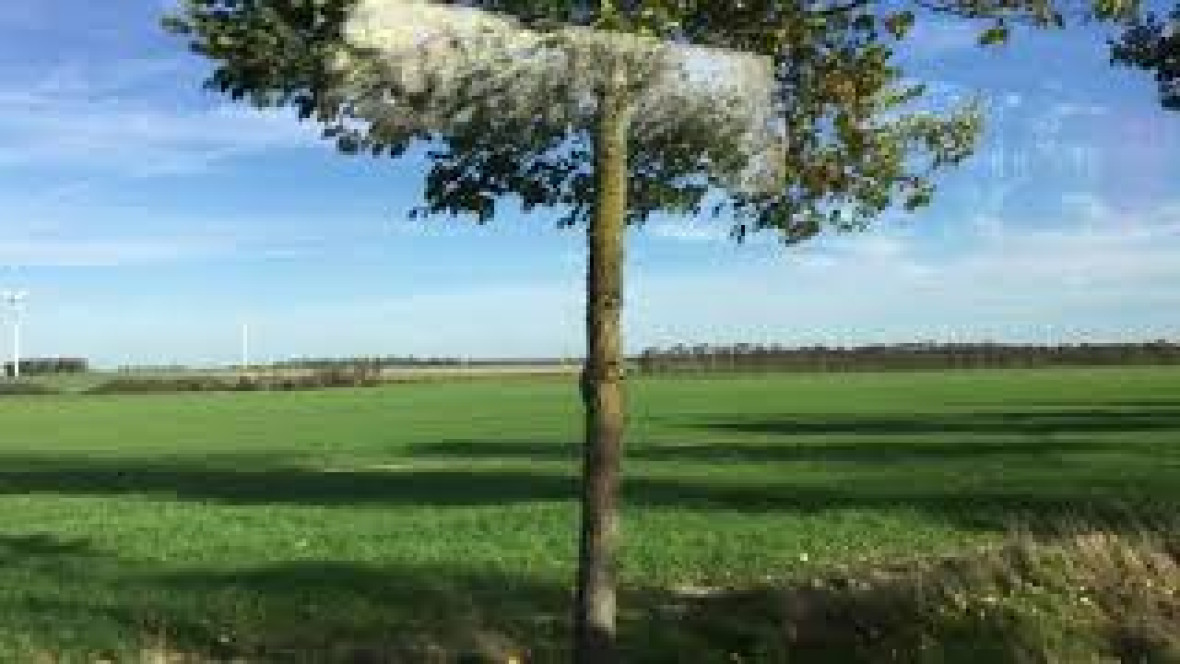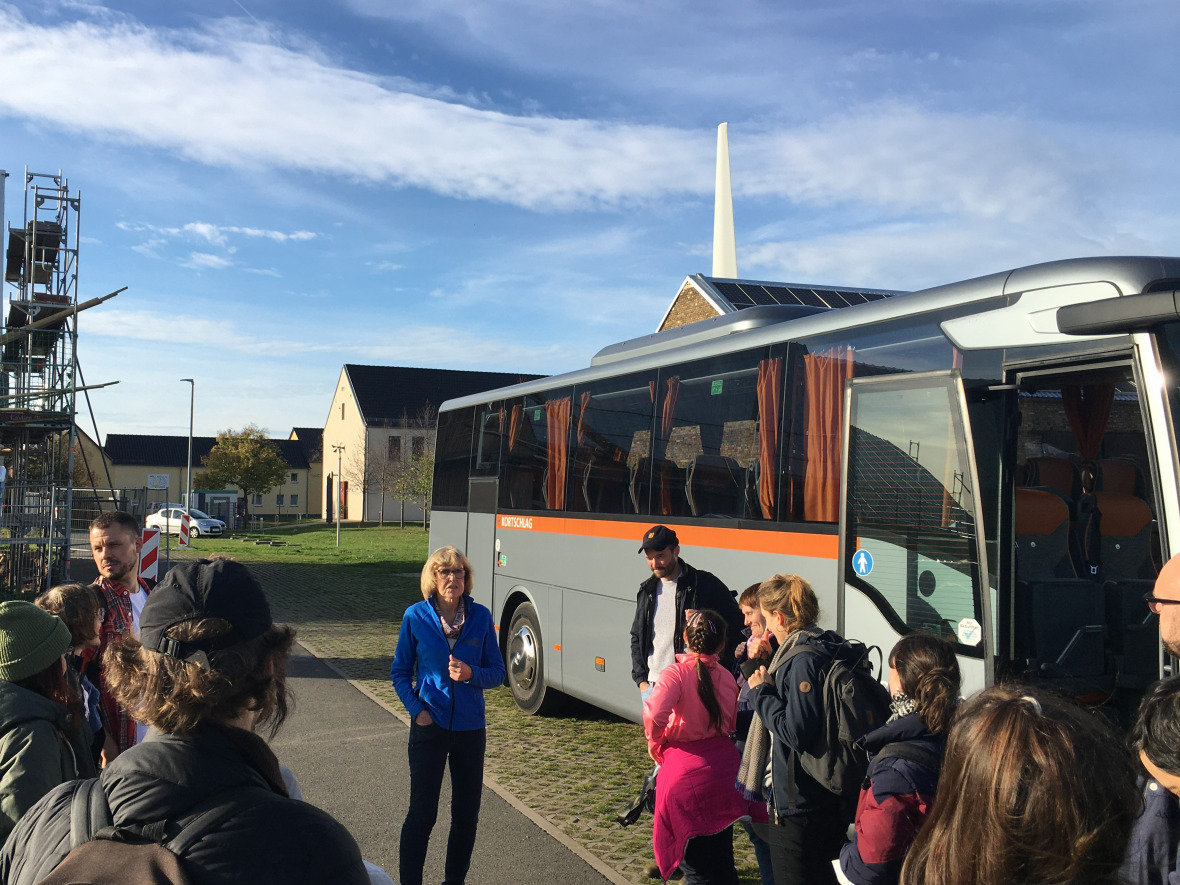A Renewables Frontrunner in Brandenburg
23.11.2022
We like to think of Germany as a trailblazer in the transition to a sustainable energy system. But the energy crises unleashed by Russia’s invasion of Ukraine have highlighted the shortcomings in Germany’s energy policy. The truth is that when it comes to the energy transition, successive governments have dragged their heels and wasted precious time. Undaunted by this, many towns and villages have taken things into their own hands and created carbon-neutral energy and heating systems that power their communities and more.
What were the drivers of these success stories? Who made a difference? What technologies did they opt for? How did they manage to win over entire communities for their ideas? A group of scientists from the IASS research group "Energy Transitions and Public Policy”, led by Prof. Johan Lilliestam, recently visited the village of Feldheim in rural Brandenburg, to learn more about how change unfolds on the ground. What were the drivers of these success stories? Who made a difference? What technologies did they opt for? How did they manage to win over entire communities for their ideas? A group of scientists from the IASS research group "Energy Transitions and Public Policy”, led by Prof. Johan Lilliestam, recently visited the village of Feldheim in rural Brandenburg, to learn more about how change unfolds on the ground.
Lilliestam's research group is trying to understand what science can do to help policymakers steer society towards a rapid and just transition to a carbon-neutral energy system. The group conducts research on public policies for all stages of the energy transition: from the promotion of zero-carbon technologies through to the transformation of institutions for a sustainable energy future.
The group was met by Kathleen Thompson from Feldheim’s New Energies Forum, who outlined the magnitude of the village’s achievements. Feldheim, she explained, began its transformation in 2010 when the village was home to just 130 residents (today 150). Since then, 55 wind turbines with a capacity of 123 megawatts have been erected nearby, with a total annual output of 250 million kilowatt hours.
Media
Wind turbines in Feldheim

A regional regulating power station with a capacity of ten megawatts balances fluctuations in grid frequency. This battery energy storage facility provides backup power to the power grid and is needed to compensate for short-term fluctuations. The regulating power plant relieves the grid when there is an oversupply of electricity by storing surplus power and can supply power to stabilise the grid within seconds when required. The battery bank consists of around 3000 storage modules. The station is connected to the public power grid in Germany’s eastern states. Most of the electricity generated through wind power in Feldheim feeds into the grid and supplies some 55,000 households.

A biogas plant fed with pig and cattle manure, but also corn silage and grain meal from local farms supplies the local heating system. A wood chip heating system provides additional heating as required. The material remaining after the feedstock has been processed by the biogas plant is used as fertilizer on local fields. The local heating network supplies the village’s roughly 40 households as well as an industrial consumer, two public buildings and four farms.
Together with the town of Treuenbrietzen, the residents of Feldheim are all shareholders of Feldheim Energie GmbH & Co KG. “Residents were able to purchase a stake in the company for 3,000 euros and are represented by five deputies," says Thompson, adding that the arrangement helped to build acceptance for the project.
Why did planners consider the area for the development of such a large wind farm, one of the researchers inquired. "Because it's flatland and only 150 meters above sea level," Thompson explained. Windmills were a familiar sight here in the past and were used to mill locally grown grain. Farmers were initially worried that the construction of access roads to the wind turbines would interfere with farming operations. Involving them in planning processes from the outset enabled the developers to address their concerns and increased acceptance.
Another major milestone on the way to energy self-sufficiency was the development of Selterhof Solar Park on a 45-acre property formerly occupied by a military depot. Energiequelle GmbH developed the solar park on the site after first demolishing 85 derelict buildings and a gas station. Work on the park’s construction began in 2008. Today, the solar farm boasts 9,844 photovoltaic modules and generates around 2700 megawatt hours annually – enough to supply roughly 600 four-person households.
In the afternoon, the group marched past the energy storage facility, the biomass plant and photovoltaic modules to a towering wind turbine. Standing 149 metres tall, the turbine was built by manufacturer Enercon. Access to the turbine platform is via a service elevator that takes around fifteen minutes to reach the top. Outside, we were surprised at how little noise the turbine actually makes (listen to the Video). In the engine room, on the other hand, the sound was almost deafening.
What we learned in Feldheim was that the technologies we need to create a carbon-neutral energy system are available. Ultimately, it is people that make a difference. Energy transitions happen – small and large – happen when communities are empowered to participate and share the benefits of sustainable energy. And as Eduardo Galeano wrote: “Many little people, in little places, doing little things, can change the world…”
